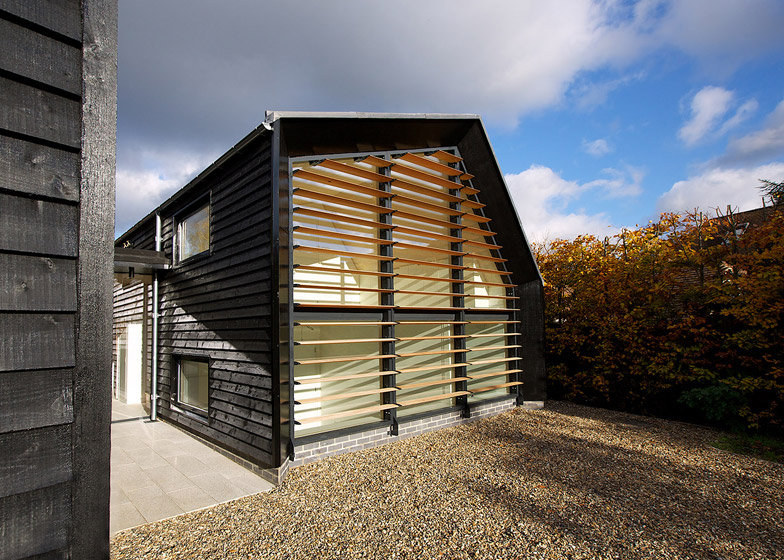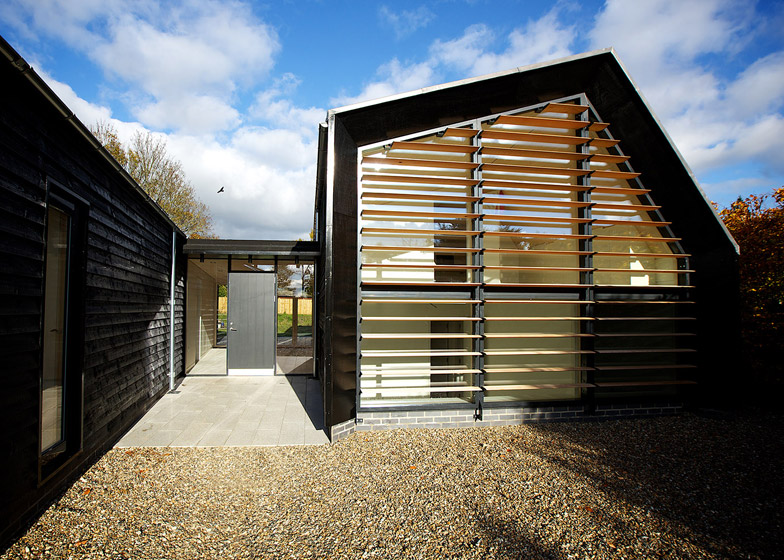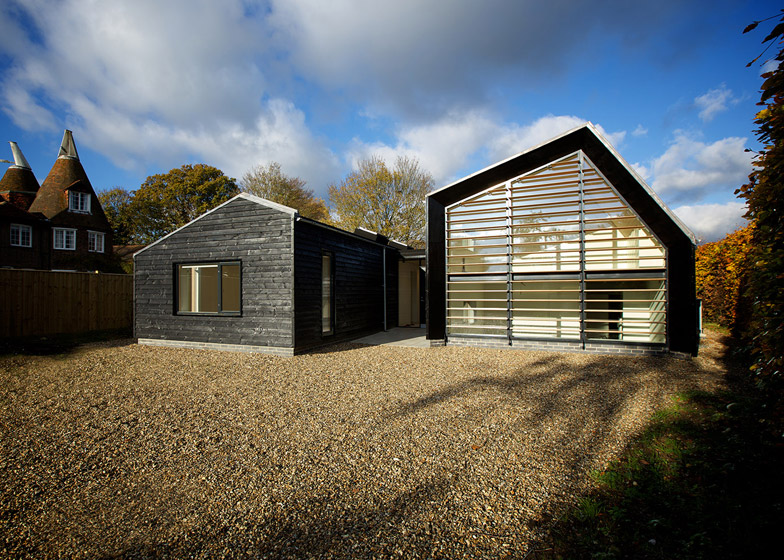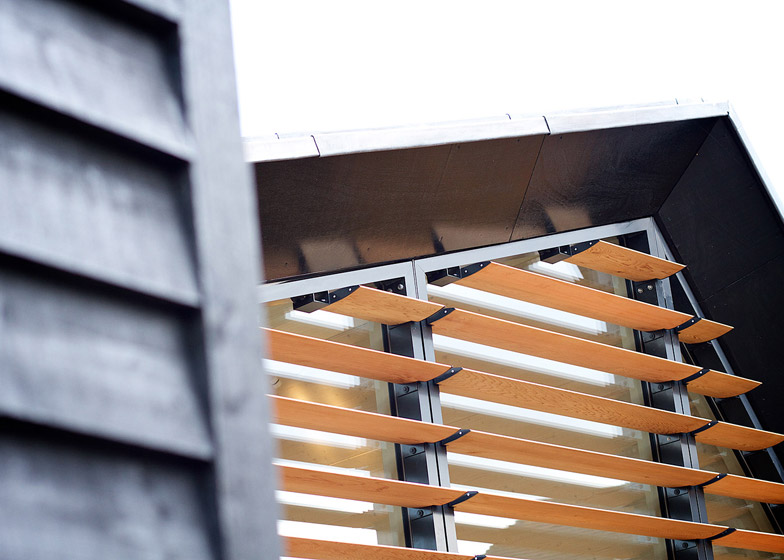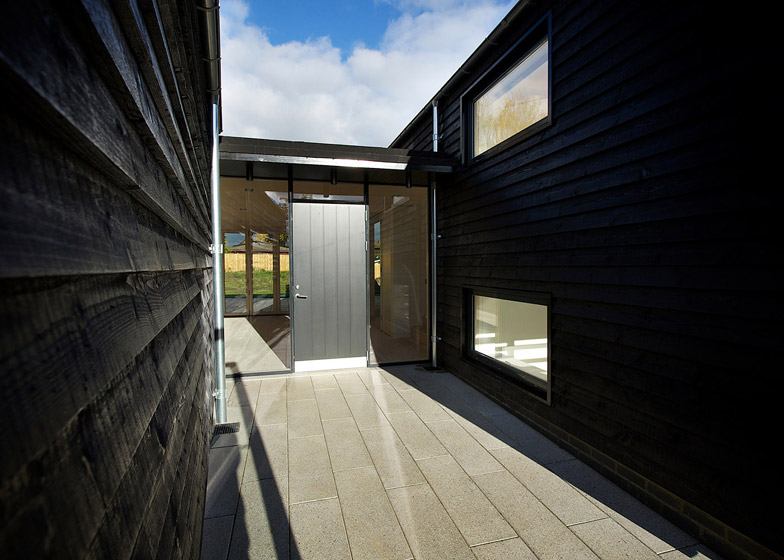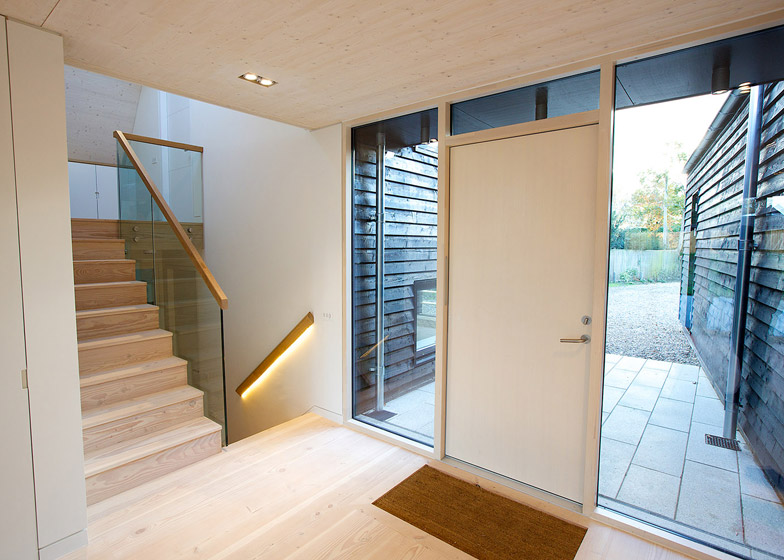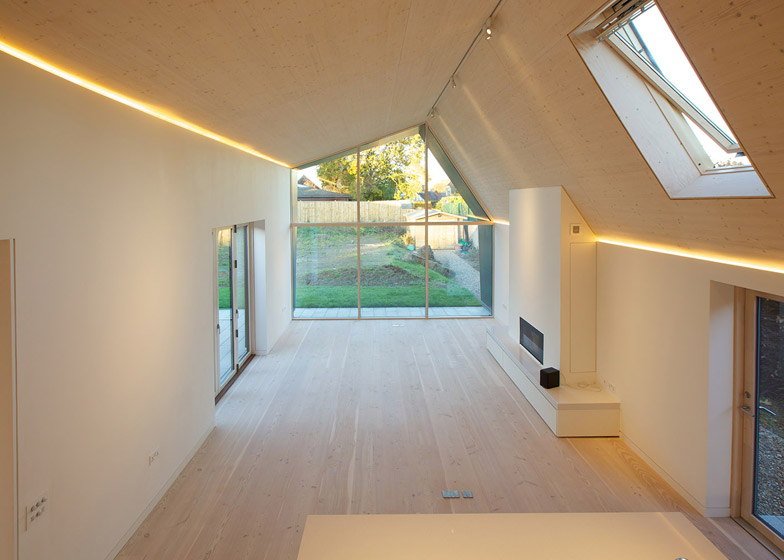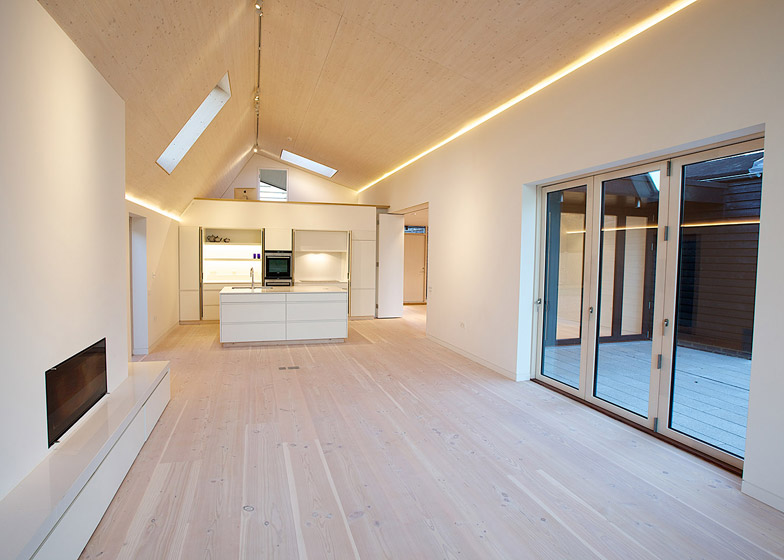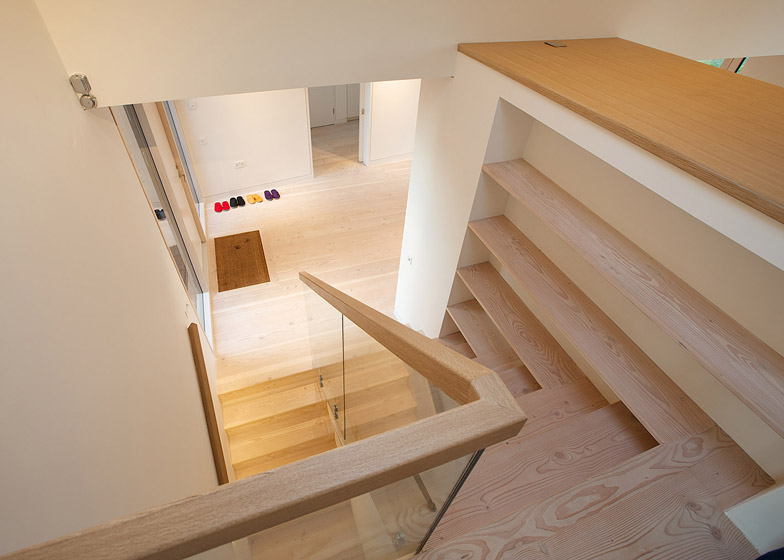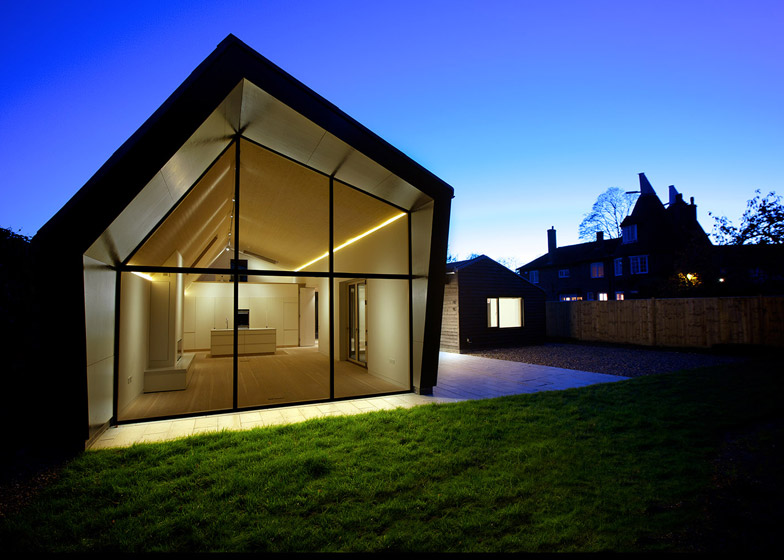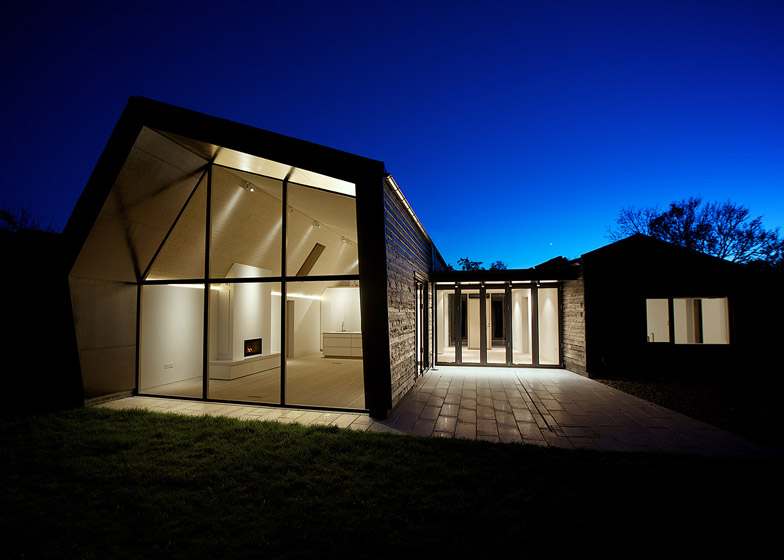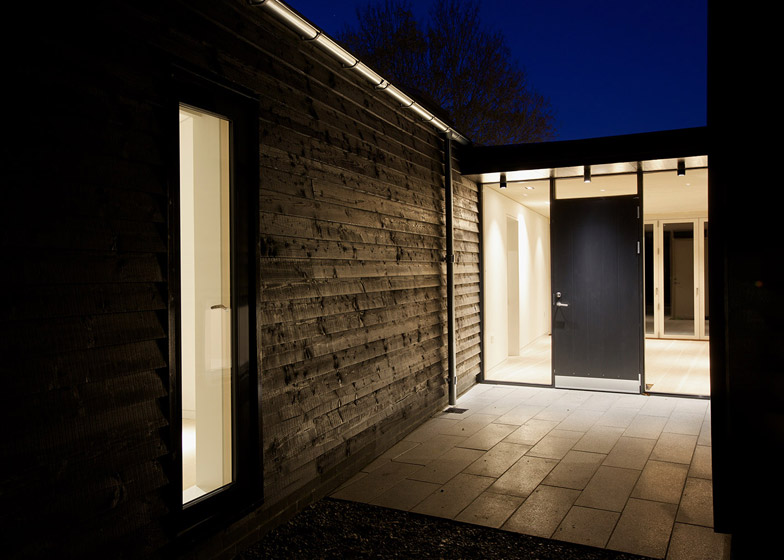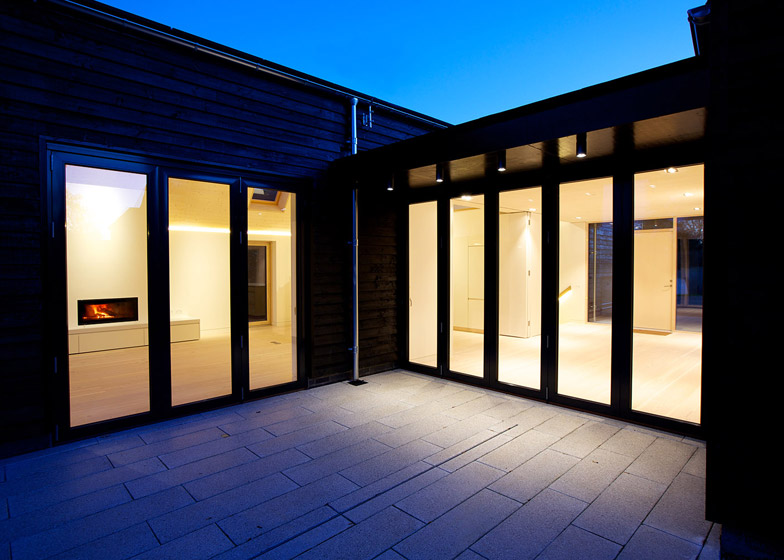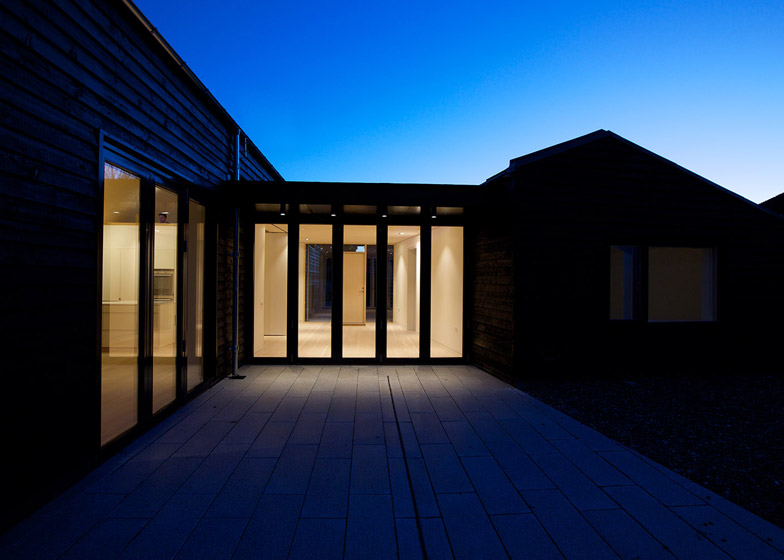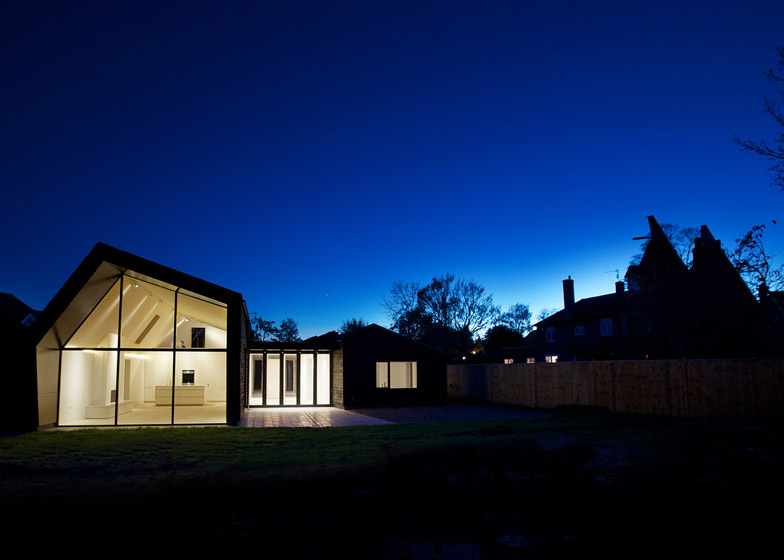The two barn-like wings of this house by Nash Baker Architects, in the English town of Tonbridge, feature blackened timber cladding and glazed walls shielded by wooden louvres (+ slideshow).
The property was designed by London office Nash Baker Architects for a couple reaching retirement age, who wanted to downsize from their previous home in the adjacent 19th century oast house.
Having spent the past 25 years in the oast house, which was once used to dry hops as part of the brewing process, the client wanted a more modern, sustainable and accessible home built in its grounds that was flexible enough to accommodate visiting children and grandchildren.
To complement the vernacular aesthetic of the oast house and the surrounding countryside, the architects used blackened timber cladding, typical of local Kentish barn buildings, for the exterior of the house's two low off-set wings.
A sedum roof and sloping eaves that descend towards the boundaries of the site are intended to help the building merge with its surroundings.
The arrangement of spaces inside the long, narrow wings was determined by the path of the sun and the varying degrees of privacy required in different rooms.
"The form of the building is to a large extent a response to the client's requirement for natural light and outlook," explained architect Simon Baker.
A glazed entrance hall separates the two wings, maintaining views through the centre of the building from the gravel parking area to the garden at the rear.
The foyer separates the living spaces on one side of the property from the main sleeping areas on the other and can be used as a dining area for large parties.
A double-height kitchen and living area, separated from the foyer by a folding partition, culminates in a glazed wall that fills the end facade and looks out onto the garden.
Stairs next to the entrance lead down to a lower ground floor containing a television room, utility room and toilet.
An adjacent flight of stairs with built-in shelving ascends to a mezzanine level housing a study that overlooks the main living room. A doorway off the mezzanine leads to a small room that can be used for working or as an additional bedroom.
This end of the living wing is glazed and angled timber louvres are fixed to the exterior to act as a sun-shading brise soleil during the summer. Two bedrooms and bathrooms are housed in the more enclosed sleeping wing and were designed with disabled access in mind.
Wood features heavily throughout the interior, with the cross-laminated timber panels used to construct the building visible on the ceiling.
Photography is by Will Layzell.
Read on more more information from Nash Baker Architects:
Bourne Lane, Tonbridge, Kent
This contemporary eco-house sits harmoniously in the grounds of a traditional nineteenth century Oast house which has been the client's home for 25 years.
Designed for a Norwegian and British couple contemplating retirement and no longer wishing to look after such a large, high maintenance property, this new, low rise home has been designed to be modern, sustainable, accessible and flexible. Ensuring it will continue to serve their needs for as long as necessary, it is intimate enough for two yet adaptable for large family occasions and visiting grandchildren.
Conceived as a contemporary interpretation of the Kentish barn style with characteristic black timber cladding, the bold structure nestles into the surrounding landscape with consideration for the area's local heritage through the use of high quality, locally sourced materials. The distinctive eaves that lower towards the neighbouring boundaries and green sedum roof allow the building's elements to further blend into the environment, as well as encouraging local wildlife by providing new habitats and flora.
All spaces and views to and from the property have been channelled for maximum light and privacy, responding to natural sun patterns as well as the clients' brief to create quieter sanctuaries away from the social areas of the house. The low-rise structure was developed around two asymmetric barn-like wings connected by a central entrance hall that draws guests into the house with expansive views onto the garden beyond. Dividing the two elements into distinct living and sleeping quarters, this central space serves as the main entrance to the house as well as a flexible dining space for large family get-togethers and parties. The intimate sheltered courtyard beyond is perfectly positioned to savour the evening light.
Accessed through a folding partition is the open plan kitchen and living room with its dramatic double height space projecting onto the terrace and garden. Flooded with natural light at all times of the day, this space was conceived for the family to relax and entertain around the wood burning fire. Accessed from a timber staircase and with fine views over the living area and into the garden beyond, a mezzanine area functions as a study.
Behind this lies a further space suitable for quiet work or for use as an occasional grandchildren’s bedroom. Contained in the partially submerged lower ground floor below are a cosy TV area, utility room, and WC, with specially orientated external timber louvers providing shade for these spaces during the summer months. The second wing, accessed through sliding doors from the entrance/dining area has been designed as a more intimate and quiet sleeping area, with 2 bedrooms and bathrooms – both of which are disable access friendly.
The property has been designed to both Code for Sustainable Homes (level 4) and Lifetime Homes standards. Constructed using cross-laminated timber panels (CLT), the construction material are expressed throughout the interior - a celebration of wood as a structural and visual material. Both the Douglas Fir flooring and the exposed CLT ceilings have been treated with lime to lighten their finishes and prevent the wood yellowing over time. The off-white walls helps balance the use of timber, and provides a suitable backdrop for the owners’ eclectic art and furniture.

